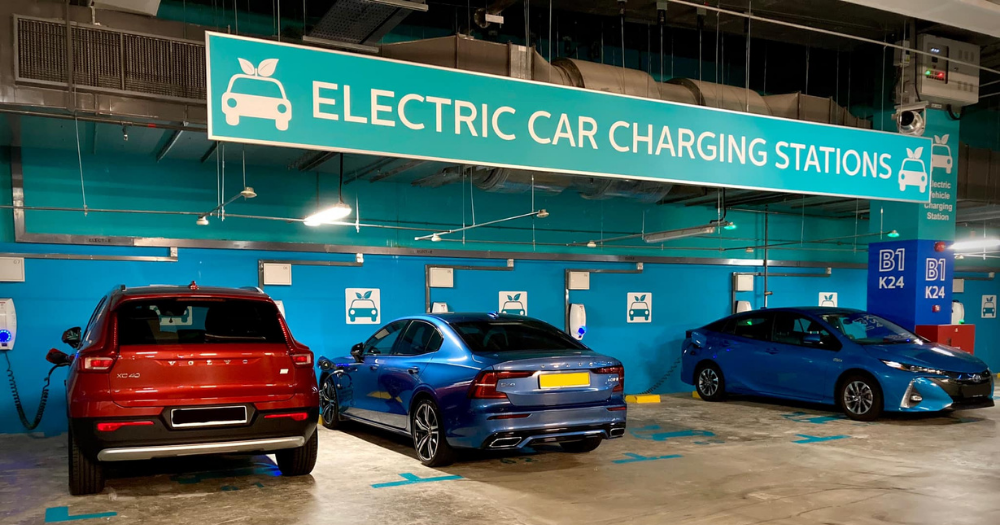Singapore has been increasing its push for the electrification of vehicles in a bid to reduce carbon emissions and strive towards a sustainable city.
At a recent webinar though, an academic stated that reducing the demand for travel is the better solution.
Three approaches
Associate Professor of Engineering Systems at the Singapore University of Technology and Design (SUTD) Lynette Cheah was one of the panellists at a recent webinar hosted by the Ministry of Sustainability and the Environment (MSE).
The webinar included other academics and experts versed in various topics revolving around climate change.
The discussion focused on the recent Intergovernmental Panel on Climate Change's (IPCC) Sixth Assessment Report (AR6) and how it is relevant to Singapore.
During the panel discussion, a question was raised on how the demand for transport can be reduced, and how consuming transport energy can be more efficient.Cheah — who is also a review editor for the chapter on transport for Working Group 3, the IPCC group which is responsible for assessing climate change mitigation — shared three general approaches to reduce transport emissions.
1. Avoid
One key approach is to avoid traveling in the first place, or manage travel demand.
This includes managing the growth in such demand, especially in developing economies, Cheah said.
Reducing travel demand can be done so through good urban planning, and making amenities and jobs accessible to people, thus reducing the need to travel long distances.
2. Shift
Shifting away from travel via private cars to more energy-efficient means such as public transport is the second approach.
3. Improve
Thirdly, improving the efficiency of vehicles is another way to reduce carbon emissions, such as through using cleaner fuels and sustainable technologies.
Electric vehicles (EVs) are one such example as they do not consume fossil fuels, the production of which generates plenty of carbon emissions.
"Incremental improvements" only
In line with the country's move towards sustainability and renewable energy, the government has embarked on a big push for the electrification of vehicles, with the aim of phasing out internal combustion engine vehicles by 2040.
Measures to increase the adoption rate of environmentally-friendly EVs will also be implemented, such as the plan to deploy 40,000 charging points in HDB carparks by 2025.
Aside from its energy efficiency, EVs have zero tailpipe emissions which help reduce air pollution, and more importantly, allow for a shift away from fossils fuels and to decarbonise the transport system, Cheah elaborated in a comment to Mothership.
However, Cheah noted that while the third approach of using EVs and cleaner fuel is "helpful", it will "likely only result in incremental improvements".
The current challenge is that demand for transport will continue to grow, she said.
She added:
"There are 1.3 billion vehicles worldwide now, and this is expected to top two billion by year 2050. Freight transport demand will grow three times in the same time.
So how we fulfil this need to travel is the question."
"Electrifying our vehicles alone cannot solve this," Cheah highlighted.
Instead, private car use should be discouraged, and the use of public transport promoted, in order to achieve carbon-free transport and move closer to the goal of low or zero carbon emissions.
As such, these "transformative changes" can be achieved through the aforementioned first and second approaches.
A car-lite future with increased accessibility
Cheah said that Singapore's push for a car-lite transport future is aligned with this idea.
The Land Transport Authority's Masterplan 2040 has a vision for a city where people can reach their neighbourhood centres in 20 minutes via walking, cycling or riding public transport.
People will also be able to walk, cycle or ride to their workplaces in business parks, central business districts and industrial areas in 45 minutes or less by 2040.
To do this, the government has been expanding the rail network and cycling paths.
"Public transport not only helps with minimising energy and environmental impact, it enhances the quality of urban space and allows high-density living in cities," Cheah said.
Reducing carbon emissions is one of Singapore's goals under the Singapore Green Plan 2030.
Some 2030 targets include increasing solar energy deployment, reducing energy consumption in HDB towns by 15 per cent, and greening 80 per cent of buildings in Singapore.
Related story:
Top photo from Jefferson Tan / FB
If you like what you read, follow us on Facebook, Instagram, Twitter and Telegram to get the latest updates.
